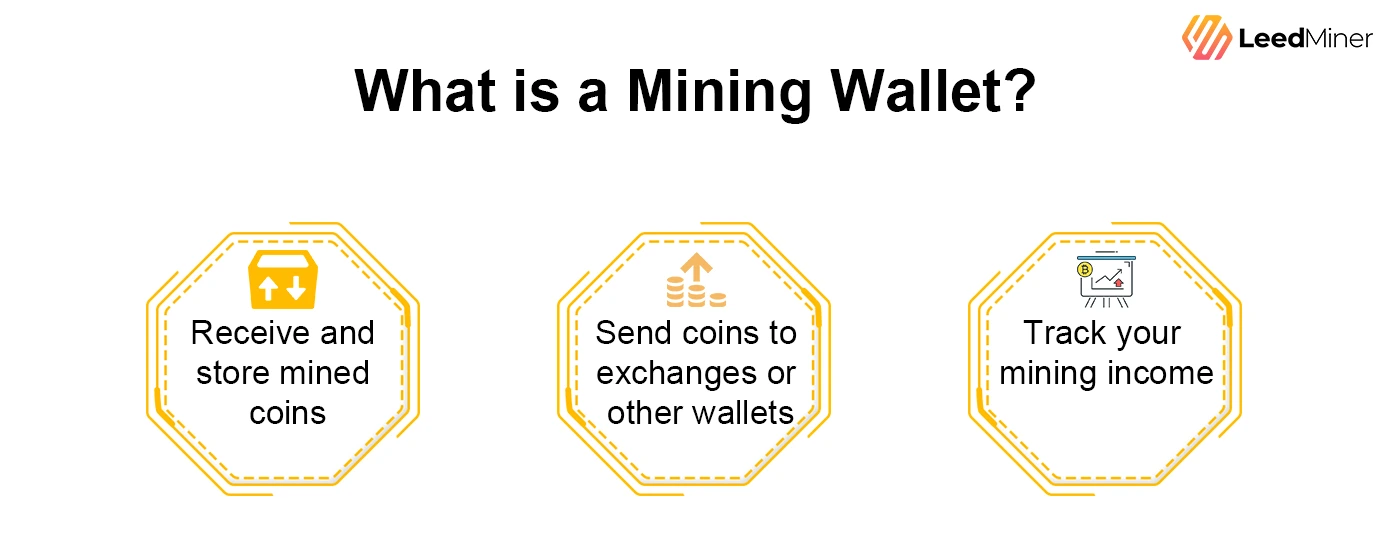What is a Mining Wallet ?
Mining101
- tagwu

SUMMARY
If you’re new to cryptocurrency mining, one of the first things you need is a mining wallet. But what exactly is it, and why does it matter?
This article explains what a mining wallet is, the different types available, how to choose the right one, and how to use it to receive your mining rewards securely.
What is a Mining Wallet

A mining wallet is a cryptocurrency wallet used to receive and store the coins you earn from mining. When your miner or mining pool finds a block or contributes hash power, your share of the reward is paid to your wallet address.
The wallet allows you to:
- Receive and store mined coins
- Send coins to exchanges or other wallets
- Track your mining income
Types of Mining Wallets

There are several types of wallets miners can use. Each has its pros and cons depending on your goals—daily access, security, or long-term storage.
Hot Wallets
- Connected to the internet, often as mobile apps or desktop software
- Easy to use for beginners and active miners
- Less secure due to online exposure
Cold Wallets
- Offline wallets, such as hardware wallets or paper wallets
- High security, great for long-term storage
- Less convenient for frequent access
Exchange Wallets
- Built-in wallets on crypto exchanges like Binance or Coinbase
- Easy to access and trade mined coins
- You don’t control the private key, so there is a risk if the exchange is hacked or freezes your account
Mining Pool Wallets
- Temporary wallets provided by mining pools
- Used to accumulate rewards before payout
- Usually require setting a minimum payout threshold
- Should be withdrawn regularly to a personal wallet for safety
How to Choose a Mining Wallet
Here are key factors to consider:
- Coin compatibility: Make sure the wallet supports the coin you’re mining (e.g., BTC, LTC, KAS)
- Security: Look for features like seed phrase backup, password protection, or 2FA
- User control: Choose wallets that let you control the private keys
- Ease of use: A clean, simple interface makes a big difference—especially for beginners
- Withdrawal frequency: If using a pool or exchange wallet, check their payout policy

How to Use a Mining Wallet
Step 1: Create or Import a Wallet
Choose a wallet type, install or set it up, and securely back up your seed phrase or private key.
Step 2: Add Your Wallet Address to the Mining Pool
Copy your wallet’s public address and paste it into your mining pool dashboard under the “payout” or “withdrawal” section.
Step 3: Receive Mining Rewards
Once configured, your pool will begin sending mining payouts to this wallet based on their schedule.
Step 4: Manage Your Earnings
You can store coins, transfer them to an exchange for trading, or move them to cold storage for safekeeping.

CONCLUSION
A mining wallet is essential for managing your cryptocurrency rewards. It’s where all your hard-earned coins are sent. Choosing the right type—hot, cold, exchange, or pool wallet—depends on your security needs and mining strategy.
Always remember: if you don’t control the private keys, you don’t fully own the coins. So choose wisely, back up your wallet securely, and stay safe while mining.
FAQs on mining wallet
Do I need a mining wallet to start mining?
Yes. A mining wallet is necessary to receive and manage the coins you earn from mining.
Can I use my exchange wallet for mining payouts?
Yes, but it’s not recommended for long-term use. Exchange wallets offer convenience but less security and no control over private keys.
What happens if I lose my wallet's seed phrase?
If you lose your seed phrase, you may permanently lose access to your funds. Always store it securely and never share it.






